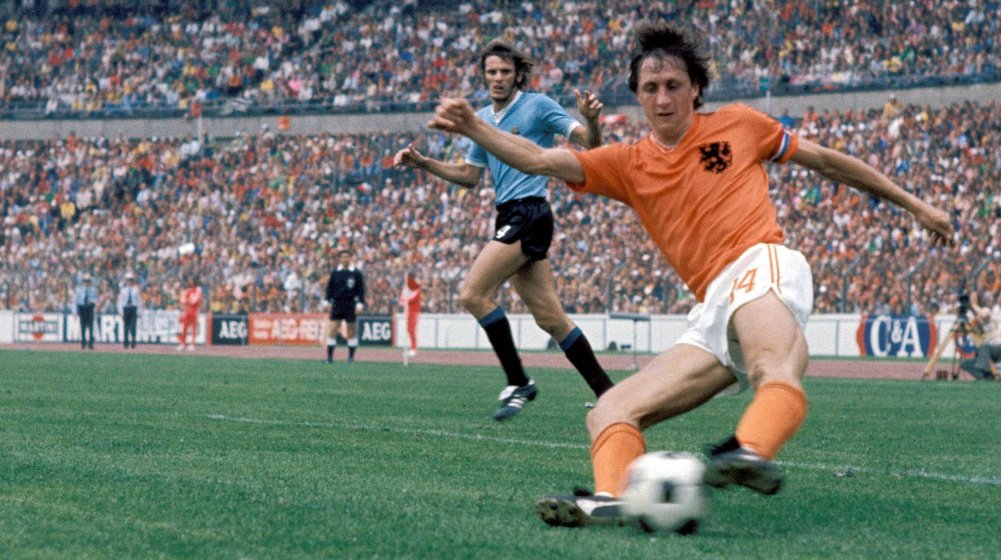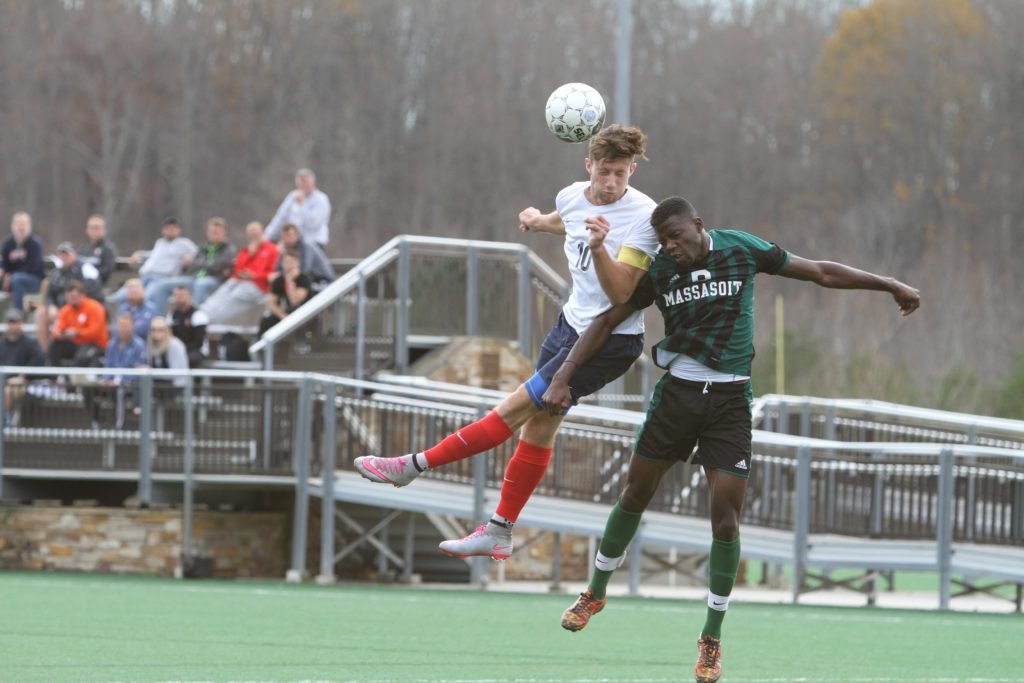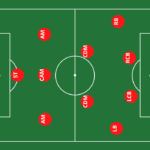- Last Updated -
Setting the stage
Versatile Soccer Players
Ah, the beautiful game of soccer! A sport that has captivated millions around the world with its mesmerizing displays of skill, passion, and sheer athleticism.
From the historic rivalries between powerhouses to the underdog stories that defy all odds, soccer has a way of touching our hearts and igniting our spirits like no other. But what makes this game so special?
What sets it apart from other sports? It is undoubtedly the dynamic nature of soccer that keeps us all hooked.
Unlike some other sports where rigid positions define players’ roles, soccer thrives on fluidity and adaptability. Players are not confined to specific zones or limited by prescribed movements; they roam the pitch like artists on a canvas, expressing themselves through their actions.
Each match is a symphony in motion – a ballet of passes, tackles, runs, and goals. And in this ever-changing landscape lies the essence of why versatile players hold immense importance.
The Role of versatile players in enhancing team performance
In any team sport, cohesion and synergy are vital for success. Soccer is no exception. A well-oiled machine can only function smoothly if every cog fits perfectly into place.
This is where versatile players come into play – pun intended! They bring an invaluable asset to their teams by seamlessly adapting to multiple positions and roles within a match.
Versatile players possess an uncanny ability to switch gears effortlessly during gameplay. They are not bound by traditional labels but rather possess a multifaceted skill set that allows them to excel wherever they are needed most.
Whether it’s a midfielder who can drop back into defense when required or a forward who can also contribute as an attacking midfielder, these chameleonic athletes provide unparalleled flexibility on the field. Their impact extends beyond mere individual performances; versatile players have a profound influence on team dynamics.
They act as the glue that holds the squad together, knitting various positional units into a cohesive unit. Their versatility allows for seamless transitions and tactical adjustments, granting their teams a competitive advantage over more rigid opponents.
Their presence alone forces opposing teams to constantly recalibrate their strategies, as marking a versatile player becomes an exercise in futility. Trying to contain them is like trying to catch smoke with bare hands – an exercise doomed to fail.
Versatile players disrupt conventional patterns of play, injecting unpredictability into matches and leaving defenders scratching their heads in frustration. Soccer is not just about individual brilliance; it’s about collective excellence.
Versatile players embody this philosophy by ensuring that no matter the circumstances or challenges faced, teams can always find solutions within their ranks. They become the unsung heroes who selflessly put team objectives above personal accolades.
So, the next time you witness a player adeptly switching positions or seamlessly adapting to new roles on the pitch, take a moment to appreciate the unique value they bring to the game. Versatility is not just a bonus; it’s an essential ingredient that elevates soccer from being merely entertaining to truly breathtaking.

Understanding Versatility in Soccer
Defining versatility: Beyond being a jack-of-all-trades
When we think of versatile players in soccer, it is crucial to understand that they are not mere jack-of-all-trades. These players possess a unique set of skills and attributes that allow them to excel in multiple positions on the pitch.
Versatility goes beyond being able to kick a ball well or run fast; it encompasses the ability to adapt seamlessly to different roles, formations, and tactical systems. It is an art that only a few can master.
Let’s be clear: versatility does not mean compromising excellence in one particular position. Instead, it amplifies a player’s value by providing options for coaches and teams.
A versatile player possesses the adaptability to slot into various positions without compromising team dynamics or causing disruptions on the field. They seamlessly transition from one role to another, bringing their expertise and skills wherever they are needed most.
The evolution of player roles and the need for adaptability
In the early days of soccer, players were assigned specific positions with rigid responsibilities. Forwards focused solely on scoring goals; defenders had one job – defending their territory; midfielders operated within their designated zones, passing the ball between defense and attack.
However functional this system may have seemed at first glance, it limited creativity and flexibility on the field. As soccer evolved into a more dynamic sport, so did player roles.
Coaches began experimenting with new formations that required players with diverse skill sets capable of fulfilling multiple tasks simultaneously. The all-round midfielder who could both defend and contribute offensively became sought after as teams realized the strategic advantages they brought.
Today’s game demands more from its athletes than ever before: defenders must be capable of launching attacks from deep; midfielders need defensive acumen alongside playmaking abilities; forwards must press opponents relentlessly while also showcasing clinical finishing. The modern game requires adaptability and versatility like never before.
The need for versatile players is further accentuated by the relentless pace of the sport. Injuries, suspensions, and tactical changes are inevitable in a long and demanding season.
When a key player is absent, teams must have someone who can seamlessly step into their shoes without causing a significant drop-off in performance. Versatile players provide that insurance policy, ensuring that teams can maintain their competitiveness even in the face of adversity.
Versatility in soccer transcends being a jack-of-all-trades; it represents a valuable asset that can elevate team performance to new heights. The evolution of player roles has necessitated the need for adaptable athletes capable of fulfilling multiple responsibilities on the field without compromising overall team dynamics.
As soccer continues to evolve, versatile players become increasingly indispensable for success. So let us appreciate these unsung heroes of the beautiful game who excel at multiple positions and embrace their unique contributions to the sport we love.

The Swiss Army Knife Players: Mastering Multiple Positions
Johan Cruyff: The Dutch Maestro Who Redefined Versatility with His Ability to Play Anywhere in Attack
Johan Cruyff, the legendary Dutch forward, was a true master of versatility on the soccer field. He shattered the conventional notions of player roles by seamlessly transitioning between different attacking positions throughout his illustrious career.
Whether he was deployed as a striker, winger, or even a trequartista, Cruyff showcased his exceptional technique, vision, and understanding of the game.
One of Cruyff’s standout skills was his ability to create space for himself and his teammates. His understanding of positional play allowed him to exploit gaps in opposition defenses and make incisive runs into dangerous areas.
This made him an absolute nightmare for defenders who struggled to track his movement across the attacking third. Cruyff’s versatility also brought an extra dimension to his team’s attacking play.
His ability to drift wide and deliver pinpoint crosses from the wings provided an additional threat in aerial duels. At the same time, he possessed incredible dribbling skills that allowed him to take on opponents in one-on-one situations with ease.
Philipp Lahm: Germany’s Defensive Stalwart Who Seamlessly Transitioned from Full-Back to Midfield
Philipp Lahm stands as a prime example of how versatility can elevate a player’s impact on both ends of the pitch. Beginning his career as a full-back known for his defensive solidity and excellent overlapping runs, Lahm later demonstrated his adaptability by successfully transitioning into a midfield role.
Lahm’s defensive prowess enabled him to excel as a full-back. He had exceptional positional awareness and timing in tackles that made it nearly impossible for opponents to bypass him.
Moreover, he possessed remarkable reading abilities that allowed him to intercept passes and initiate quick counterattacks from deep positions. His transformation into a midfielder, however, showcased the extent of his versatility.
Lahm seamlessly integrated himself into the heart of the midfield, dictating play with his precise passing and intelligent off-the-ball movements. This shift not only highlighted his technical abilities but also emphasized his tactical acumen and understanding of different roles on the pitch.
Javier Mascherano: Argentina’s Unsung Hero, Adept at Both Defensive Midfield and Center-Back Roles
Javier Mascherano’s versatility is often underappreciated in discussions about top players. The Argentine midfielder-turned-center-back was a key figure for both club and country due to his ability to excel in multiple positions.
Whether he was breaking up play as a defensive midfielder or providing solid defensive cover as a center-back, Mascherano consistently displayed immense commitment and tenacity. As a defensive midfielder, Mascherano’s relentless work ethic made him an indispensable asset in shielding the defense.
His timing in tackles was impeccable, while his unrivaled determination ensured that he never shied away from putting his body on the line for the team’s cause. He possessed brilliant positional sense that allowed him to read opposition attacks before they even materialized.
In later stages of his career, when deployed as a center-back, Mascherano continued to impress with his adaptability. His experience as a midfielder granted him an unparalleled ability to distribute the ball accurately from deep areas while maintaining excellent defensive discipline against some of the world’s best attackers.
The Swiss Army Knife Players like Johan Cruyff, Philipp Lahm, and Javier Mascherano demonstrate how mastering multiple positions can revolutionize their impact on teams. Their contributions extend beyond their abilities; they bring strategic advantages by confusing opponents with their unpredictable movement on the pitch.
Their adaptability not only enhances squad depth but also serves as an inspiration for young players seeking to fully explore their potential. These versatile players are true gems in the rich tapestry of soccer, forever leaving their mark on the beautiful game.

Tactical Flexibility: Unlocking Strategic Advantages
Exploiting opponent weaknesses through versatile players’ adaptability
Ah, the sweet aroma of tactical mastery. Versatile players in soccer possess a rare ability to sniff out and exploit every weakness in their opponents’ armor. They are the chameleons of the pitch, adapting seamlessly to different roles and positions, leaving their adversaries bewildered and overwhelmed.
It’s like watching a grandmaster playing chess against amateurs; each move is calculated with precision and purpose. Their adaptability allows them to identify vulnerable areas on the field and relentlessly attack them, turning the game into a mesmerizing display of strategic brilliance.
Utilizing a full-back as a wing-back to provide width and overload the flanks
Picture this: A full-back who possesses not only defensive solidity but also the attacking prowess of a winger. Now envision this player surging forward with blistering pace down the flank, delivering pinpoint crosses that leave opposition defenders scrambling for cover.
This is the beauty of utilizing versatile players as wing-backs – they provide unparalleled width while creating numerical superiority on the flanks.
By transforming from cautious defenders into marauding attackers, these full-backs-turned-wing-backs introduce chaos into their opponents’ defensive structures, opening up spaces for their teammates to exploit.
Think about it; when facing teams that employ traditional wingers, defenses tend to be more compact centrally, leaving vast expanses of real estate available on either side of the pitch.
Enter the versatile player deployed as a wing-back – an unexpected weapon capable of exploiting this vulnerability effortlessly. By stretching opposing defenses wide and forcing them to overcommit in dealing with their attacking threat, these multifaceted players create opportunities for their teammates in central areas or draw defenders out wide to create gaps behind them.
Deploying a midfielder as a false nine to confuse opposition defenses
Allow me to introduce you to the deceptive brilliance of deploying a midfielder as a false nine. Traditionally, the striker is seen as the focal point of attack, responsible for leading the line and tormenting defenders with his presence.
However, in this era of ever-evolving tactics, throwing a curveball by deploying a midfielder in this role can leave opposing defenses scratching their heads in confusion. Imagine an agile playmaker, blessed with exceptional ball control and unrivaled vision, operating as a false nine.
This player drops deep into midfield, dragging center-backs out of position and creating space for onrushing midfielders or wide forwards to exploit. With precise movement and razor-sharp passing ability, they become puppeteers controlling the game’s tempo and bewildering defenders with their unpredictability.
It’s like experiencing an artistic masterpiece unfolding on the pitch – watching a versatile player masquerading as a forward creates chaos and uncertainty among defenders who are used to dealing with traditional target men.
The false nine confounds expectations disrupts defensive structures, and introduces an element of surprise that is often decisive in unlocking stubborn backlines.
Tactical Flexibility Summary
Tactical flexibility in soccer is not just another fancy buzzword thrown around by pundits; it is the secret weapon that separates mundane teams from extraordinary ones. Versatile players bring unparalleled advantages through their adaptability and ability to exploit weaknesses within opposing teams’ formations.
By utilizing full-backs as wing-backs, teams gain not only width but also overload flanks while introducing unexpected attacking threats.
Deploying midfielders as false nines adds confusion to defensive lines while providing creative opportunities for teammates. The beauty lies not only in witnessing these tactical maneuvers unfold but also appreciating the sheer audacity it takes to deviate from conventionality.
Soccer should never be predictable; it should be a canvas for genius minds to create breathtaking masterpieces, and versatile players are the brushes that paint those strokes of brilliance. So, let us celebrate the tactical sorcery that versatile players bring to the game.
Let us marvel at their ability to unlock strategic advantages and revolutionize the way we perceive soccer. For in their audaciousness lies the true essence of this beautiful game.

Building Resilient Squads: Squad Depth and Injury Crisis Management
Coping with injuries or suspensions by having players capable of filling multiple positions
In the ever-demanding world of soccer, injuries and suspensions are inevitable. The ability to cope with these setbacks is what separates the pretenders from the contenders. Teams that possess versatile players capable of seamlessly slotting into various positions during an injury crisis demonstrate wisdom and foresight in squad building.
Gone are the days when a team could rely solely on a fixed starting lineup. Modern soccer demands adaptability and versatility from every player, not just those labeled as “utility” players.
The ability to fill multiple positions ensures that no matter who goes down injured, the team’s performance remains unaffected. Let’s face it; injuries can be crippling for any team.
Countless times we’ve seen teams crumble under pressure when key players succumb to unfortunate circumstances. However, those teams that have invested wisely in versatile players have managed to weather these storms with minimal disruption.
Case studies on teams that successfully navigated through injury crises using versatile players
One prime example is Liverpool FC during their 2019-2020 Premier League triumph. Jurgen Klopp’s side faced a significant setback when their star center-back Virgil van Dijk suffered a long-term injury early in the season.
Many pundits predicted Liverpool’s downfall, but they had other plans. Klopp demonstrated his shrewdness in squad building by utilizing versatile midfielders Fabinho and Jordan Henderson as makeshift central defenders alongside Joe Gomez.
These players stepped up admirably, ensuring Liverpool maintained their defensive solidity despite losing their defensive linchpin. Another case study lies in Bayern Munich’s treble-winning campaign in 2019-2020 under Hansi Flick.
When first-choice right-back Benjamin Pavard suffered an injury, Joshua Kimmich seamlessly transitioned from midfield to fill that role. His adaptability and versatility allowed Bayern to continue dominating matches and ultimately lift the Champions League trophy.
These examples highlight the importance of forward-thinking squad planning. Teams that invest in versatile players not only secure depth but also create an environment where tactical adjustments due to injuries or suspensions become minor hurdles rather than insurmountable obstacles.
The role of versatile players in building resilient squads cannot be overstated. The ability for individuals to seamlessly transition into multiple positions ensures teams remain competitive even in the face of adversity.
By investing in versatile players and fostering their development, clubs can navigate injury crises with confidence, maintaining their performance levels, and continue on a path to success. So let’s cherish these unsung heroes who step up when it matters most and contribute immensely towards their team’s resilience and triumphs.

The Mental Aspect: Versatility as an Asset for Player Development
Unleashing the Potential Within The Psychological Benefits of Versatility for Young Players’ Development
As young players embark on their soccer journey, it is crucial to understand that versatility is not merely a physical attribute but a mental asset that can shape their development. The psychological benefits of being versatile go beyond the pitch, permeating every aspect of a player’s life.
By embracing versatility, young athletes can unlock their potential and propel themselves toward greatness. Versatile players develop enhanced decision-making skills as they are constantly exposed to different game situations.
Whether it’s adapting to various positions or being tasked with diverse responsibilities within a team, these players cultivate the ability to make split-second decisions under pressure. This acute decision-making ability becomes ingrained in their psyche and translates into success not only on the soccer field but also in other areas of their lives.
Adaptability is another invaluable trait that versatile players possess. They become accustomed to adjusting their playing style according to the team’s needs or tactical shifts during matches.
This adaptability extends beyond soccer and empowers them to thrive in ever-changing situations, both on and off the field. They learn how to embrace challenges rather than recoil from them and develop a resilience that sets them apart from one-dimensional players.
Football Intelligence Unleashed: How Versatility Enhances Decision-Making Skills, Adaptability, and Overall Football Intelligence
Versatile players possess an inherent football intelligence that sets them apart from others. Their exposure to different positions allows them a comprehensive understanding of the game from multiple perspectives.
This enhanced football intelligence enables them to read the game more effectively, anticipate opponents’ moves, and make intelligent decisions based on split-second calculations. Furthermore, versatility enhances problem-solving skills as players constantly find themselves in unfamiliar situations where they need innovative solutions.
These individuals become adept at analyzing and dissecting the game, identifying weaknesses in opponents’ strategies, and exploiting them to their advantage. Their ability to think outside the box and adapt quickly to changing circumstances becomes a valuable asset for any team.
Moreover, versatile players develop an acute sense of teamwork and camaraderie. They appreciate the challenges faced by their teammates in various positions and possess a deep respect for each role’s demands.
This empathy fosters effective communication and collaboration on the field, creating a cohesive unit capable of overcoming any obstacle. Their understanding of different positions allows them to offer guidance and support to their fellow teammates, elevating the team’s overall performance.
Versatility in soccer is not just about physical attributes but encompasses vital mental aspects that shape player development. Young athletes who embrace versatility benefit from enhanced decision-making skills, adaptability, and overall football intelligence.
These players become well-rounded individuals who excel not only on the field but also off it. As coaches and mentors, it is our responsibility to nurture these qualities in young players, empowering them to reach their full potential as versatile individuals capable of conquering any challenge that comes their way.
The Dark Horse Effect: Surprise Elements that Leave Opponents Bewildered
Unleashing the Unpredictable
Ah, the beauty of the dark horse effect in soccer. It is a phenomenon that leaves opponents scratching their heads and fans cheering with excitement.
Versatile players play a crucial role in this surprise element, as their ability to seamlessly adapt to different positions catches their adversaries off guard. Picture this: a right-back suddenly darting down the wing like a lightning bolt, leaving defenders in his wake.
Or perhaps a central midfielder dropping back to center-back, displaying defensive brilliance where it was least expected. These unexpected moves not only disrupt opponents’ plans but also inject an electrifying energy into matches.
Creating Tactical Chaos
In the realm of tactics, versatility acts as a catalyst for chaos. When versatile players are deployed strategically, they can completely unsettle opponents’ game plans and force them into disarray. Imagine facing a team with an attacking midfielder who can effortlessly drop back into defense when needed, preventing your team from finding gaps in their backline.
As you attempt to mark and neutralize this player’s influence, another versatile player sneaks past your defenses and strikes from an unexpected position on the field. This tactical chaos created by versatile players keeps defenses on high alert and forces them to constantly adapt – or crumble under pressure.
The Element of Surprise
Football is much more than just eleven players competing against each other; it is about mind games and unpredictable moments of brilliance. Versatility adds an element of surprise that sets teams apart from their competitors.
When opposing teams prepare for matches, they study individual players meticulously, analyzing their strengths and weaknesses within specific roles on the field. However, when faced with versatile players who can seamlessly switch positions at any given moment, all those preparations go out the window.
The Fear Factor
Versatile players instill fear in the hearts of opponents. Their ability to excel in multiple positions makes defenders tremble and midfielders lose sleep. They are the wildcards, the unknown variables that cannot be easily neutralized or contained.
The fear factor that versatile players bring to the game is invaluable, as it not only boosts their team’s confidence but also undermines their adversaries’ morale. The mere presence of a versatile player on the opposition’s team sheet sends shockwaves through their ranks, leading to moments of hesitation and doubt.
A New Era of Football
The dark horse effect created by versatile players signifies a new era in football, one where rigid positions and predictable tactics are being challenged and disrupted. It represents an exciting shift towards greater creativity, adaptability, and unpredictability on the field. As teams continue to embrace versatility as a strategic advantage, we can expect more thrilling moments and unexpected turns in matches.
Conclusion
Versatile players are not just valuable assets; they are game-changers who leave opponents bewildered and spectators enthralled. The dark horse effect created by their ability to seamlessly switch positions disrupts well-laid plans and injects excitement into matches. This tactical chaos forces opponents to adapt on the fly or risk being overwhelmed by unpredictability.
Moreover, versatility instills fear in opposing teams, undermining their morale and boosting confidence within one’s ranks. As we celebrate this new era of football defined by creativity and adaptability, let us embrace the power of versatile players – for they add a touch of magic that makes soccer truly beautiful.
The Changing Role of Strikers in Soccer
The Changing Role of Strikers in Modern Soccer Soccer, known as the...
Read MoreSoccer History USA: From Struggles to Successes
Soccer, also known as football, is the world's most popular sport, with...
Read MoreWhat is a soccer tackle?
The Importance Of Mastering Tackling Skills For Success In Soccer To succeed...
Read MoreConcussion Substitutions in Soccer: evolving concussion protocols
The Growing Concern for Player Safety in Soccer Soccer, a beloved sport...
Read MoreCan Soccer Cleats Be Used For Baseball?… Pros and Cons…
Soccer and baseball are two different sports that require specific types of...
Read MoreSoccer Overtime Rules: Everything You Need to Know
Introduction: Overtime Soccer Rules Everything You Need To Know Soccer is a...
Read MoreBest Laceless Soccer Cleats 2024
What Are The Best Laceless Soccer Cleats? Soccer players know the importance...
Read MoreHow To Break In Soccer Cleats
How to break in soccer cleats The Importance of Breaking in Soccer...
Read MoreWhat is the best soccer position to play?
What is the best soccer position? Soccer is a sport that requires...
Read MoreWhat is the hardest position in soccer to play?
What is The Hardest Position in Soccer Importance of understanding positions in...
Read MoreTwo Soccer Skills That Are Essential
Shooting and Heading the soccer ball are both soccer skills you should...
Read MoreBest Soccer Cleats For Midfielders 2024
The Best Soccer Cleats For Midfielders in 2023 - Our Top 5...
Read More5 Best Soccer Cleats For Speed In 2024
Our Top 5 Picks for the Best Soccer Cleats for Speed in...
Read MoreSoccer vs Football Field – A Tale of Two Fields
Comparing the Corners: Soccer Field Vs Football Field Shapes Let's talk a...
Read MoreThe Transformation of Midfielders Roles in Soccer
The Transformation of Midfield Roles in Soccer The Evolution of Soccer Tactics...
Read MoreThe Power of a Goal in Soccer, How it Influences The Game
Football, commonly known as soccer, has established itself as a globally renowned...
Read MoreWhat is a cap in soccer?
If you're a soccer fan, you've probably heard the term "cap" being...
Read MoreDo Grip Socks Help In Soccer?
Do Grip Socks Help In Soccer? The Importance of Footwear in Soccer...
Read MoreBest Soccer Cleat Insoles 2024
What are the Best Insoles For Soccer Cleat? Are you a serious...
Read MoreSoccer Corner Kick – Soccer Law #17
A corner kick is a type of free-kick that is awarded to...
Read MoreSoccer Position # 9 Center Forward Explained
Playing the # 9 soccer position, forward or Striker, is a crucial...
Read MoreBreaking Down the False 9 Soccer Position
The false 9 position is a term used in soccer to describe...
Read MoreNutmeg in Soccer, Soccer’s Sneakiest Move
Soccer is an incredible sport with numerous skills and techniques that make...
Read MoreThe Highest Scoring Games In Soccer History
Phew, after reading about the seven worst blowouts in soccer history, I...
Read MoreSoccer Tips: The Secret to Becoming a Better Player
Soccer is a sport that has become incredibly popular all around the...
Read MoreThe Role of a Center Defensive Midfielder
The Backbone of the Team: The Role of a Center Defensive Midfielder...
Read MoreHandball Rule In Soccer – Law #12
Soccer is one of the most popular sports globally, with millions of...
Read MoreMastering the 4-3-3 Soccer Formation
Here Are Some Teams That Have Mastered the 4-3-3 Soccer Formation -...
Read MoreBest Soccer Cleats for Women In 2024: Top 5 Picks
The Best Soccer Cleats for Women in 2023: Top 5 Picks The...
Read MoreBest Grip Socks For Soccer 2025
In this post, we present the best grip socks for soccer, so...
Read MoreHow Many Soccer Games In A Season
The number of soccer games in a season varies depending on the...
Read MoreThe Mercy Rule In Soccer And The Roll It Plays
Picture this: a soccer match, with one team dominating the field and...
Read MoreSoccer Position # 4 Center Back Explained
Center Back in soccer is the # 4 Position, also known as...
Read MoreSoccer Goal Size and Dimensions
Brief History of Soccer Soccer has been played in various forms throughout...
Read MoreHow Many Soccer Players Are On A Field?
The standard number of players on a soccer team is eleven. Each...
Read MoreSoccer Positions For Slower Players
Soccer is a unique sport that requires a combination of physical strength...
Read MoreMastering the Midfield Is The Key To Winning In Soccer
As soccer players try to gain control of the game, midfielders are...
Read MoreBox-to-Box Center Midfielder: The Engine of Modern Soccer Teams
Soccer is a game of skill, strategy, and teamwork. Every player has...
Read MoreDominate the Field With The 4-2-3-1 Soccer Formation
Soccer is a dynamic game that constantly evolves, and its tactics are...
Read MoreBest Youth Soccer Cleats for 2024 : Top 5 Pick
Welcome to our comprehensive guide on the best youth soccer cleats for...
Read More



































